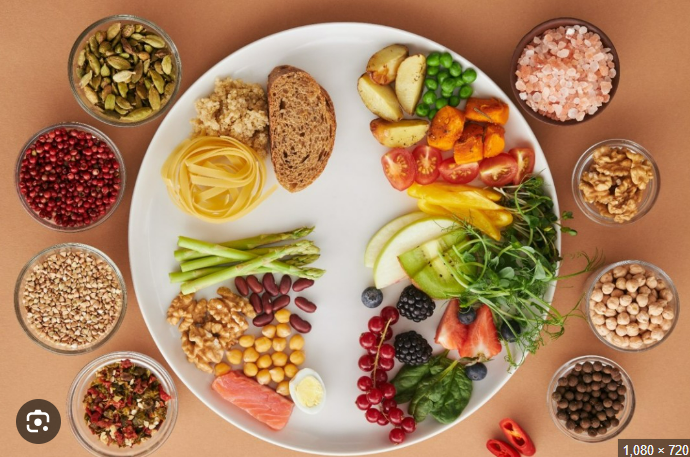
In a world where supermarkets offer an endless variety of food choices, understanding how to read and interpret nutrition labels is a powerful tool for taking control of your health. Whether you’re managing a health condition, trying to lose weight, or simply aiming to make better dietary choices, knowing what’s in your food is the first step. Nutrition labels can look confusing at first glance, but once you break them down, they become an essential part of smarter eating. This guide will help you understand what to look for, what to avoid, and how to make informed decisions about what you put in your body.
Why Nutrition Labels Matter
Nutrition labels are more than just a requirement from food regulators—they are a snapshot of what you’re eating. They provide key information such as serving size, calories, macronutrients (carbohydrates, fats, and proteins), micronutrients (vitamins and minerals), and ingredient lists.
Understanding nutrition labels can help you:
- Compare products quickly
- Control portion sizes
- Avoid excess sugar, salt, and unhealthy fats
- Ensure you’re meeting your dietary needs
- Support medical or dietary goals, such as managing diabetes or high blood pressure
The Basics of a Nutrition Label
1. Serving Size and Servings Per Container
The very top of the nutrition label shows the serving size and number of servings per container. This is critical because all the nutritional information that follows is based on this single serving—not the whole package.
Example: If a package of granola lists the serving size as ½ cup and contains 4 servings, but you eat the entire package, you need to multiply all the nutrient values by 4.
Tip: Always check the serving size to avoid accidentally consuming more calories, sugar, or fat than intended.
2. Calories
Calories indicate the amount of energy you get from a serving of the food. While calories are important for managing weight, they are only part of the story. The quality of those calories also matters.
Low-calorie: 40 calories or less per serving
Moderate: 100 calories per serving
High-calorie: 400 or more per serving
Tip: Be calorie-conscious but don’t obsess—focus on nutritional density (foods that provide more nutrients per calorie).
3. Macronutrients: Fat, Carbohydrates, and Protein
Fat
Total fat includes all types of fat in the food. Underneath, you’ll usually see:
- Saturated fat: Too much can raise LDL (“bad”) cholesterol.
- Trans fat: Artificial trans fats are harmful and should be avoided completely.
- Unsaturated fats (monounsaturated and polyunsaturated): These are healthier fats beneficial for heart health.
Daily Value (%DV): Aim for less than 10% of your daily calories from saturated fat and zero trans fat.
Carbohydrates
Carbs are divided into:
- Total carbohydrates
- Dietary fiber: Helps with digestion and promotes fullness.
- Total sugars and Added sugars: Naturally occurring sugars (like those in fruit) are less concerning. It’s added sugars that are the issue.
Tip: Look for products with high fiber and low added sugar. The FDA recommends limiting added sugar to less than 10% of daily calories.
Protein
Protein is essential for muscle repair, immune function, and satiety. There’s no daily %DV listed because individual needs vary, but a general target is 50 grams per day on a 2,000-calorie diet.
4. Micronutrients: Vitamins and Minerals
Nutrition labels highlight essential vitamins and minerals like:
- Vitamin D
- Calcium
- Iron
- Potassium
These nutrients are often under-consumed, especially vitamin D and potassium. The %DV tells you how much a serving contributes to your daily needs.
20% DV or more = high
5% DV or less = low
Tip: Look for foods rich in these nutrients to support bone health, immune function, and overall well-being.
5. % Daily Value (%DV)
This percentage tells you how much a nutrient in a serving of food contributes to your daily diet, based on a 2,000-calorie daily intake. Your individual needs may differ, but %DV is useful for a general guide:
- 5% DV or less: Low
- 10–19% DV: Moderate
- 20% DV or more: High
Use it to:
- Identify nutrients to increase (like fiber, potassium, calcium)
- Identify nutrients to limit (like saturated fat, sodium, and added sugar)
6. Ingredients List
Ingredients are listed in descending order by weight. This means the first few ingredients are the most prominent. This list is crucial for identifying hidden sugars, artificial additives, or allergens.
Watch out for:
- Multiple names for sugar (e.g., corn syrup, fructose, cane juice)
- Hydrogenated oils (source of trans fats)
- Additives and preservatives
Tip: Choose foods with short ingredient lists and words you can recognize and pronounce.
Nutrition Label Red Flags
Some foods might look healthy on the front but reveal a different story on the label. Here are red flags to watch for:
- High Added Sugars: Even products labeled “natural” or “low-fat” can be packed with sugar.
- Excess Sodium: More than 20% DV per serving is considered high. Aim for less than 2,300 mg per day.
- Low Fiber: Less than 2 grams per serving is a sign of refined grains.
- Hidden Trans Fats: If a label says “0g trans fat” but includes “partially hydrogenated oils” in the ingredients, it still contains trans fats.
- Serving Size Tricks: Some packages contain more than one serving but are marketed to appear as a single portion.
How to Use Nutrition Labels in Everyday Life
1. Meal Planning and Grocery Shopping
Compare similar products side by side to choose the healthier option. For example, between two granola bars, pick the one with higher fiber, less sugar, and fewer artificial ingredients.
2. Managing Dietary Needs
- For weight loss: Focus on calorie count and portion size.
- For diabetes: Monitor total carbs and added sugars.
- For heart health: Reduce saturated fat, sodium, and trans fat.
- For muscle gain: Increase protein intake and look at the quality of carbs and fats.
3. Making Healthier Swaps
- Instead of sugary cereals → Choose high-fiber, low-sugar options
- Instead of white bread → Choose 100% whole grain
- Instead of flavored yogurt → Choose plain yogurt and add fruit
Labeling Terms Explained
Food packaging can include marketing terms that sound healthy but may be misleading. Here’s what they really mean:
- “Light” or “Lite” – 50% less fat or one-third fewer calories than the regular version
- “Low-fat” – 3 grams or less of fat per serving
- “Reduced” – 25% less of a nutrient (e.g., sodium, sugar) than the original
- “High in” or “Excellent source of” – 20% or more of the DV
- “Good source of” – 10–19% of the DV
- “Natural” – No formal definition by the FDA (can still contain processed ingredients)
Tip: Don’t rely solely on front-of-package claims—always flip to the back and read the label.
Understanding Nutrition Labels When Dining Out
While nutrition labels are standard on packaged foods, eating out doesn’t mean you’re left in the dark. Many restaurants (especially chains) provide nutrition info online or on menus.
- Check calories, sodium, and fat content before ordering.
- Customize your meal (e.g., sauce on the side, grilled instead of fried).
- Avoid supersizing—even if it seems like a better value.
Final Thoughts: Empower Your Health Through Knowledge
Decoding nutrition labels is an empowering skill that gets easier with practice. In a world full of dietary misinformation, reading labels puts the facts at your fingertips—helping you choose foods that nourish your body, fuel your goals, and support lifelong wellness.
Remember, no single food makes or breaks your health. It’s about patterns and consistency. Use nutrition labels as your roadmap, not your rulebook. And most importantly, pair label reading with mindful eating and a balanced lifestyle.
Quick Checklist for Reading a Nutrition Label:
✅ Check serving size
✅ Note calories per serving
✅ Limit saturated fat, trans fat, sodium, and added sugars
✅ Look for high fiber, protein, vitamins, and minerals
✅ Read the ingredient list
✅ Use %DV as a guide
✅ Watch out for misleading health claims
With every trip to the store, you have the power to choose foods that work for you—not against you. The next time you pick up a package, take a moment to decode the label—it might be one of the simplest, smartest choices you make all day.





















